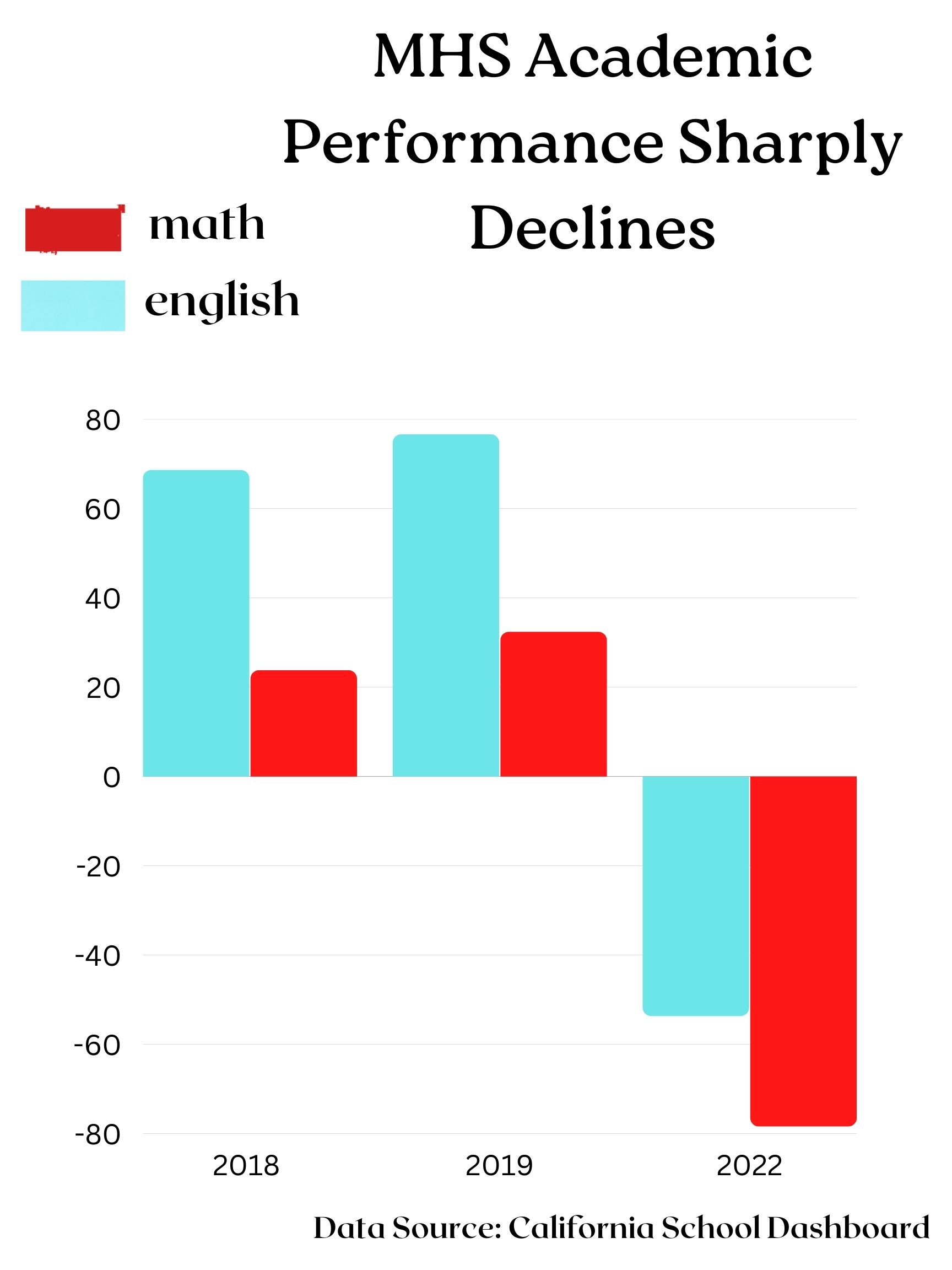The number of student opt-outs for the Smarter Balanced Assessment Consortium (SBAC) test at MHS increased significantly last year, impacting MUSD school ratings, Assistant Principal Amanda Gross said.
According to the California School Dashboard, MHS is rated currently as “very low” for English language arts (ELA) and “ low” for mathematics.
The participation rates for the ELA and mathematics portions of the 2022 SBAC exam were 59% and 57%, respectively, according to the California Department of Education’s website. In 2018 – the last year for which the participation report is available on the website – the participation rates were 95% and 94%, respectively.
“The school and district seem like they have not made the gains that we potentially have in the last few years because our parent exemptions went in as the lowest score possible per individual,” Gross said.
In order to promote SBAC testing and improve scores, various courses of action such as practice tests and homeroom activities have been planned to be set in place to better prepare juniors, Gross said.
“There will be a letter that … we send out electronically to both parents and students via ParentSquare about the test itself and the need to take it,” Gross said.
In the past, having access to a larger number of student scores allowed the English department to utilize them to decide what novels and skills to focus on, and help plan out the curriculum, English teacher Heidi Shannahan said.
“When we used these tests every year (to measure progress), we could know what kind of class a particular student should be placed in, and a group of scores helped determine where they were at at the end of the year,” Shannahan said.
However, to improve preparation for such standardized tests and further encourage students, she believes teachers and the state should work together more. on establishing and applying state standards in accordance with what is taught at school, and making the common core expectations more clear, which can boost scores, Shannahan said.
“There does not seem to be a direct correlation between what is being taught in the classroom and what the kids are being asked to do (on the SBAC tests),” Shannahan said. “There needs to be a way…the standards and expectations are more clear.”
Other than knowing how they compare to their peers and other students in the state, the SBAC test does not particularly benefit test takers and is not reflected on transcripts, and there is no other motive for students to take it and do well, Shannahan said.
Students tend to opt out because they “may feel that it allows for more time to study for AP tests, some students would like to sleep in, and some feel that the tests are not important,” Gross said.
According to senior Aarush Arora, many students, including himself, did not feel that the SBAC had any personal benefits and felt that it would be a waste of time. He only would have considered taking the test if it was shorter, the testing schedule was different, and he had been informed of its potential benefits, he added.
“As juniors, we are already stressed with SAT preparation, keeping up our grades, and focusing on extracurriculars, so no one really has the time for the SBAC,” Arora said.
However, juniors should consider taking the SBAC because, within the California Community College System and the California State School System, SBAC scores for the English and Math portions can replace placement tests for college courses, allowing students to potentially take some higher level English and Math classes, Gross said.
“Scoring low does not have any negative impacts in college or university, or any acceptances, but there are a number of scholarships available based off of these scores,” Gross said.
The SBAC is an opportunity for our students to show what they have learned throughout their high school career, it is therefore in our school’s best interest, our district’s best interest, and our community’s best interest for students to participate in the SBAC, Gross said.

